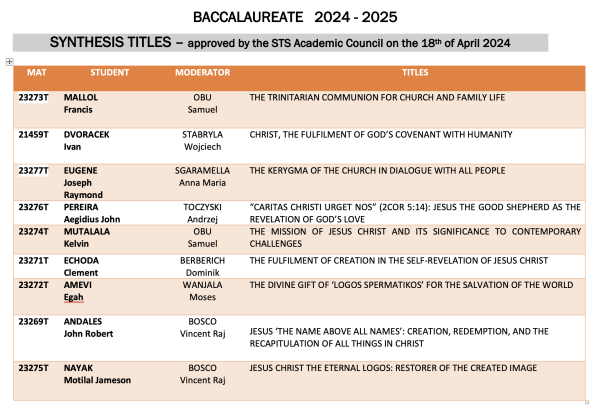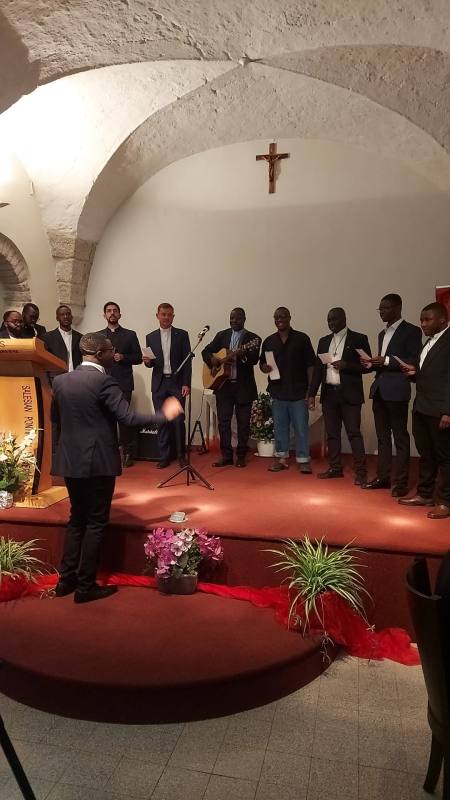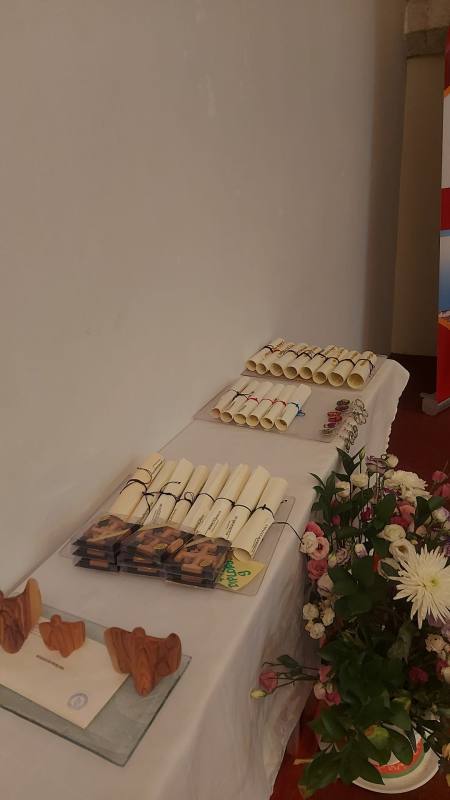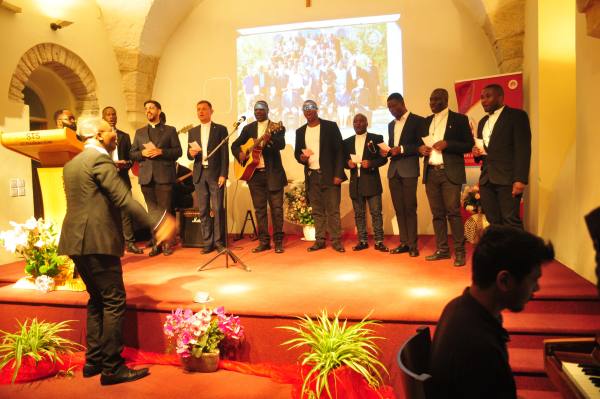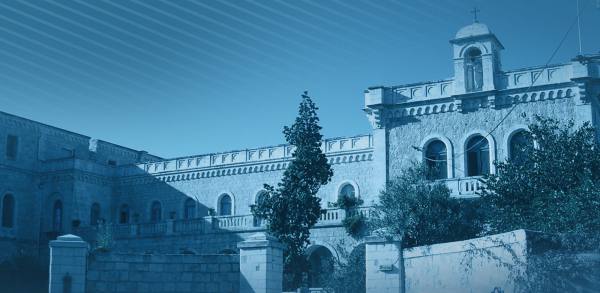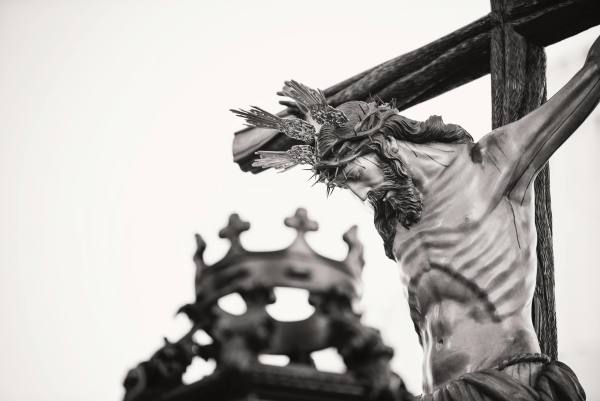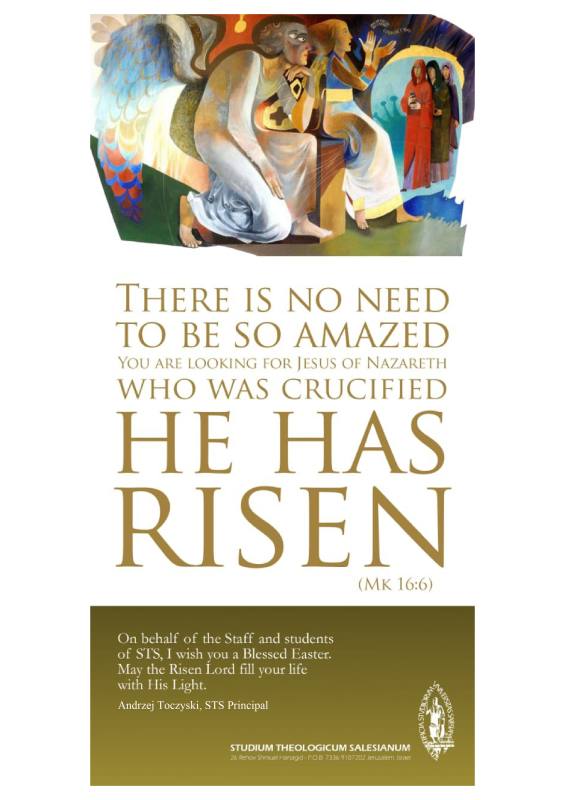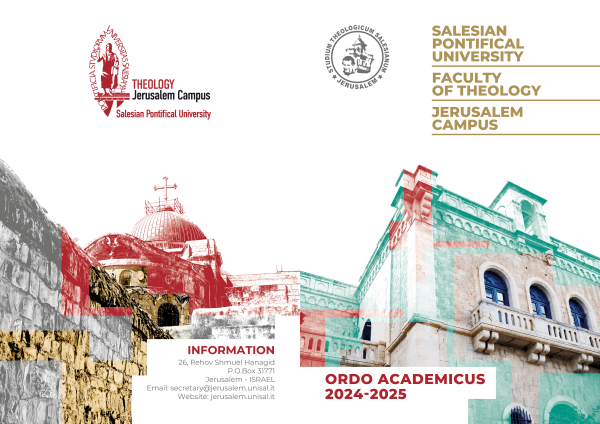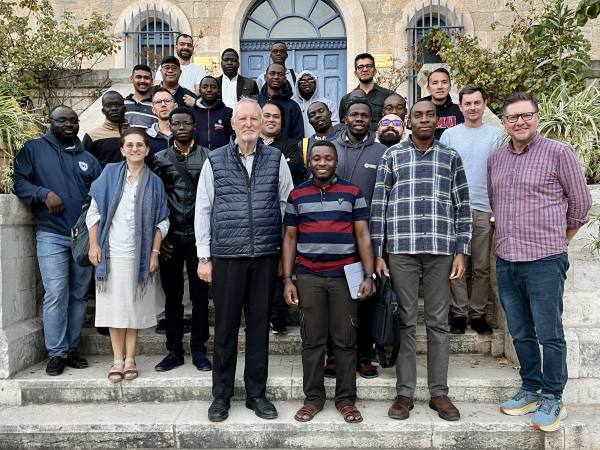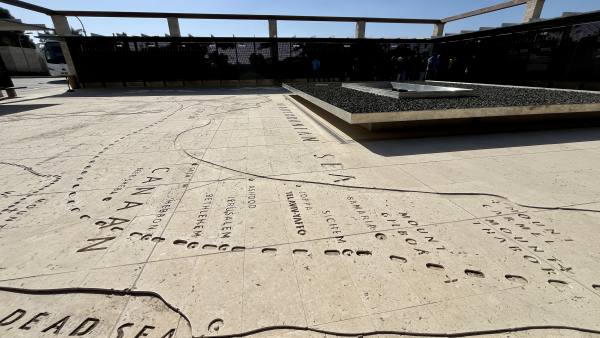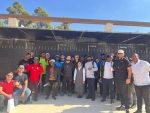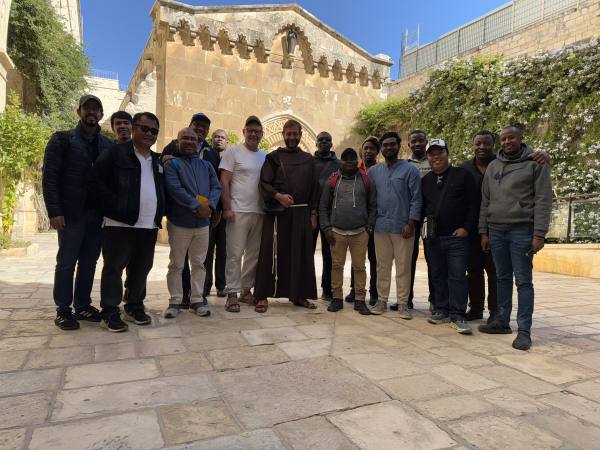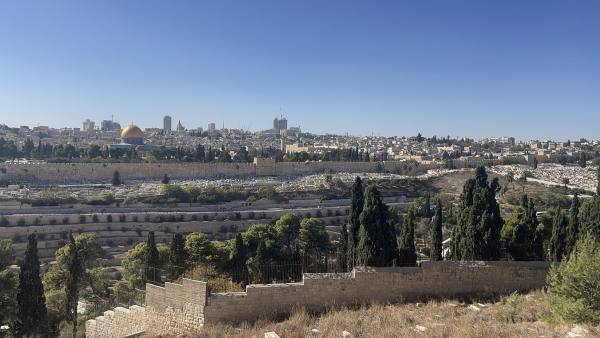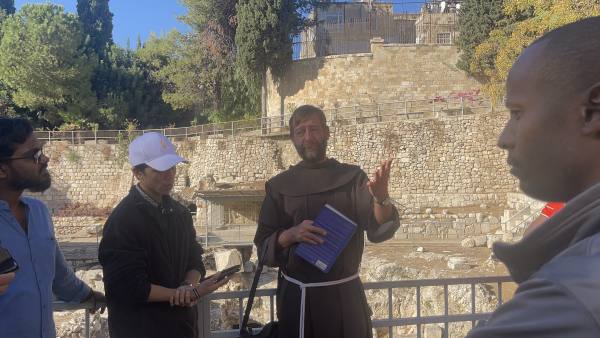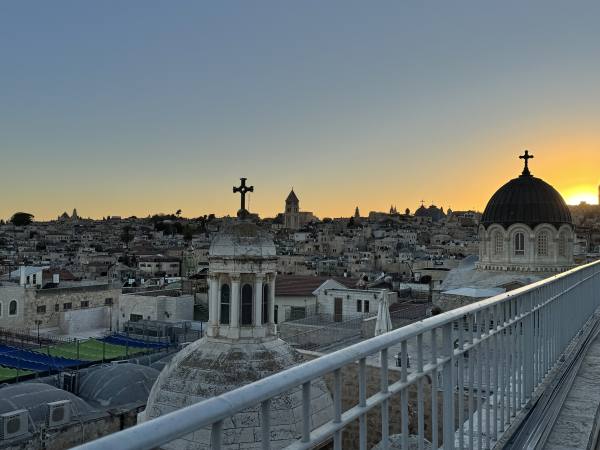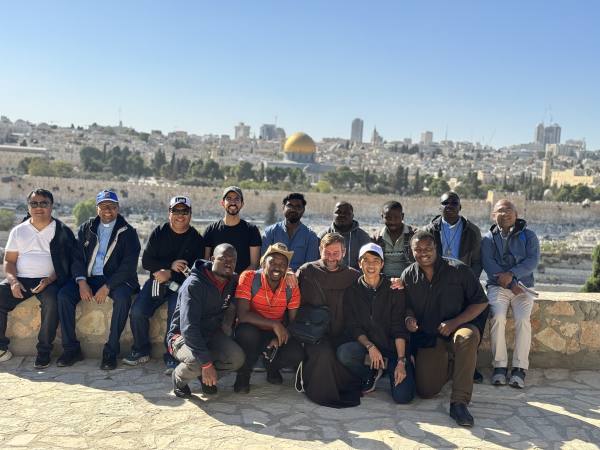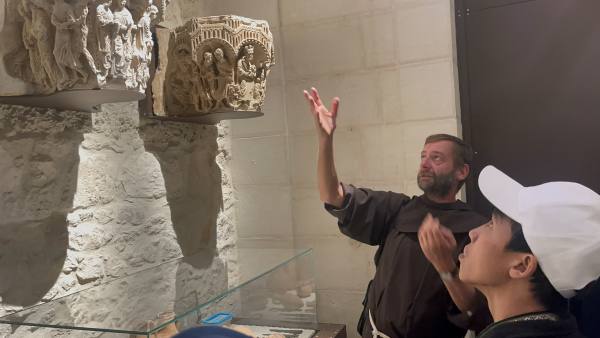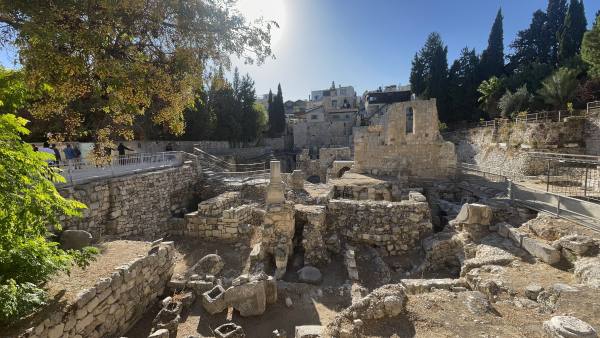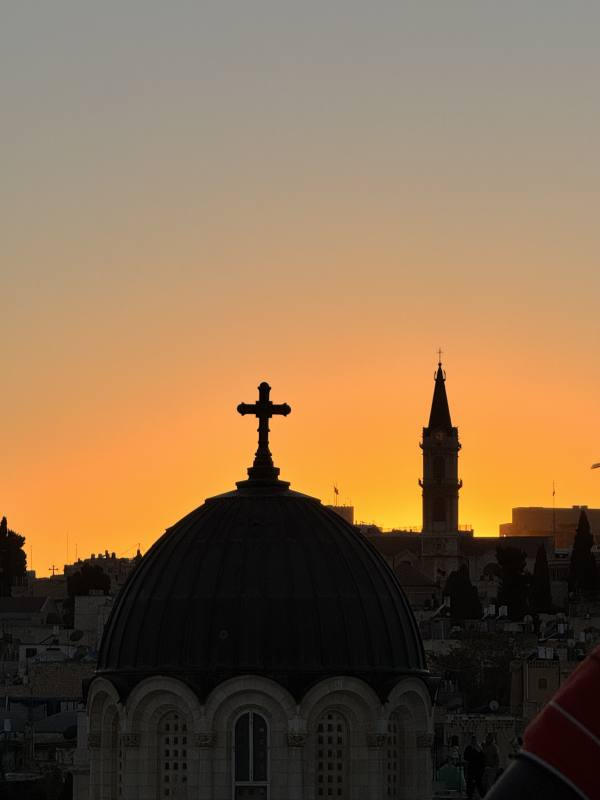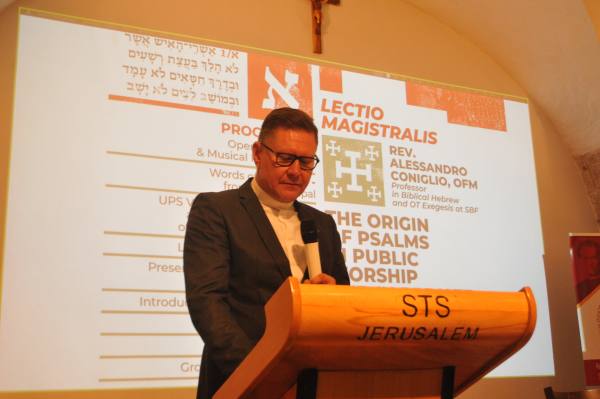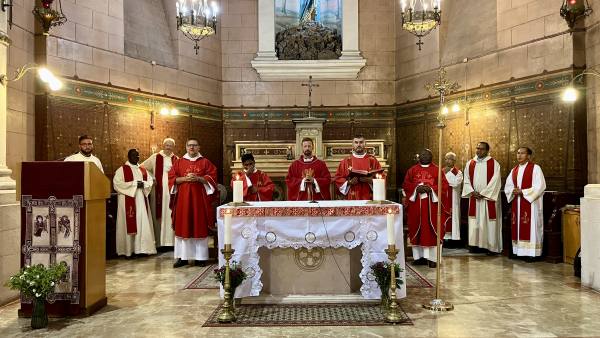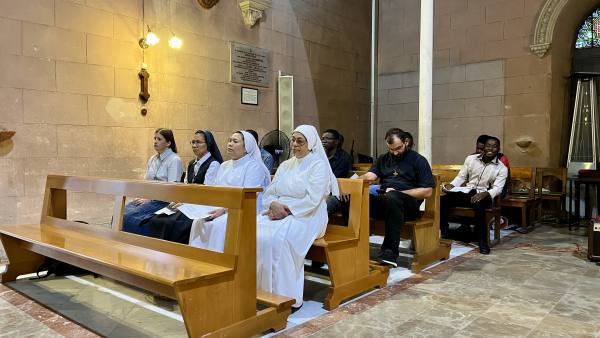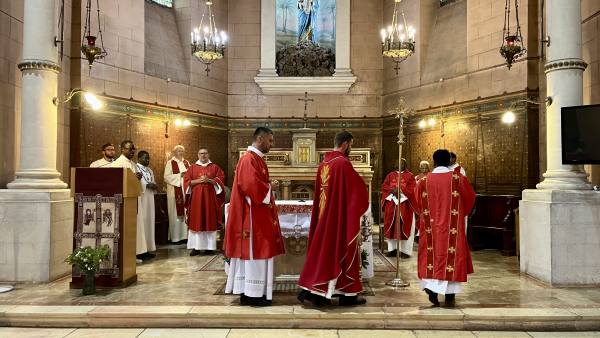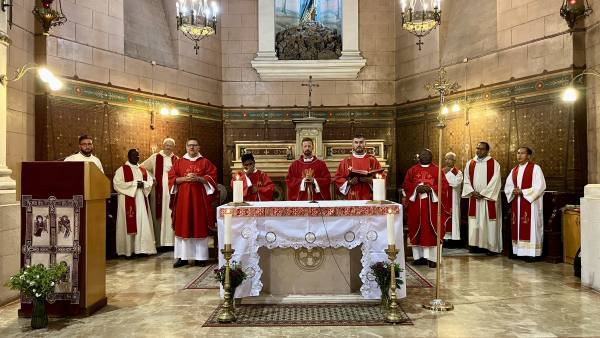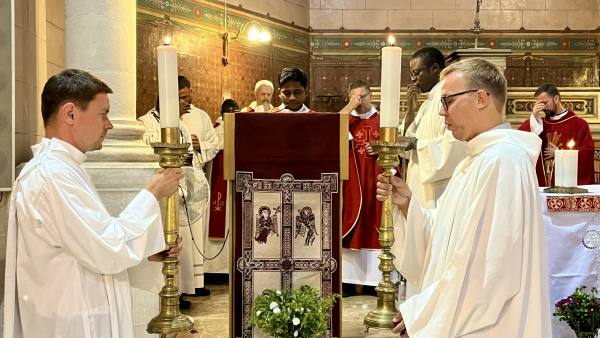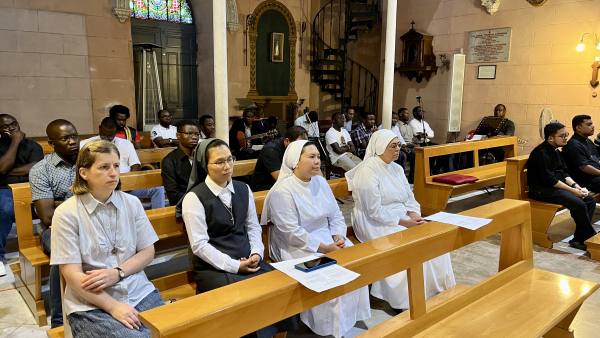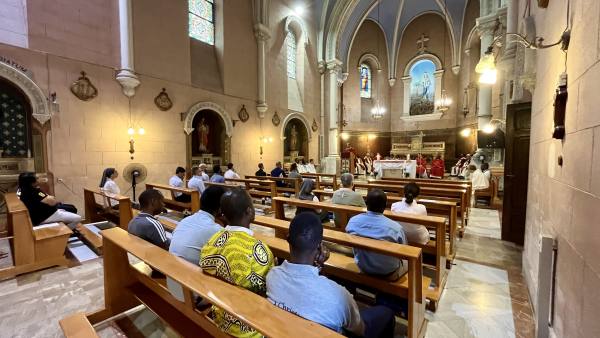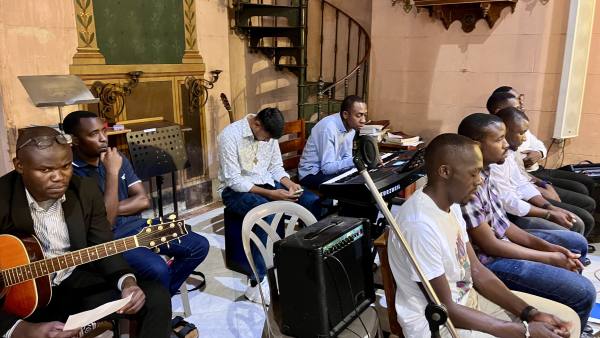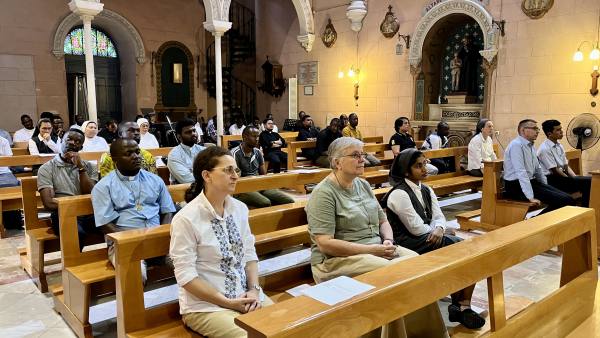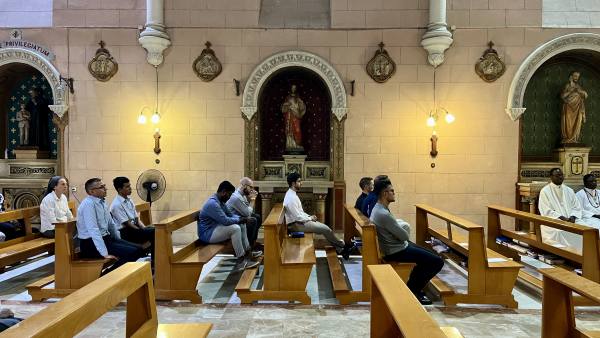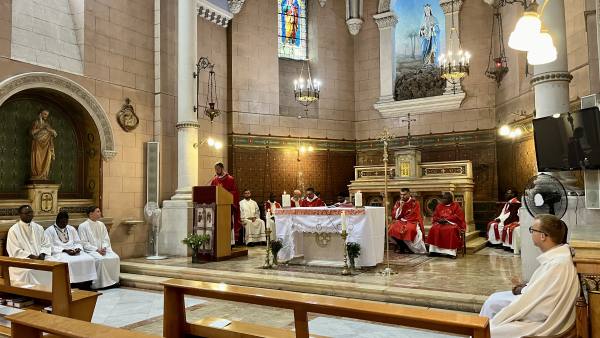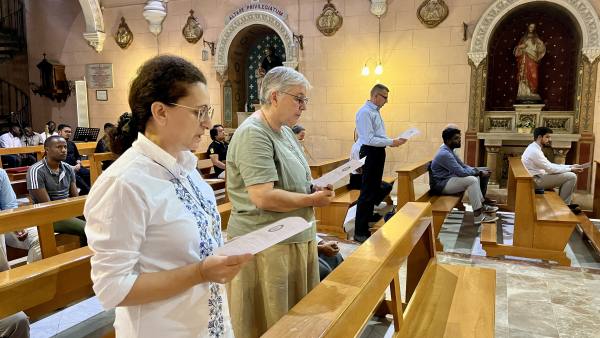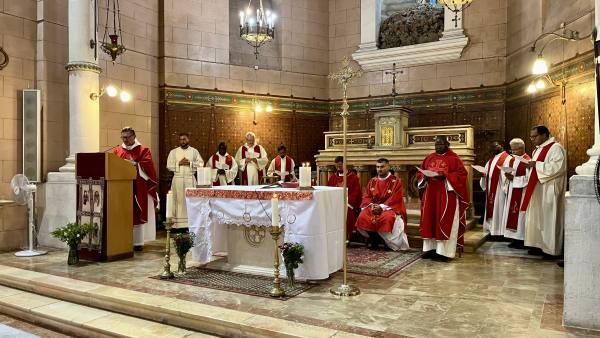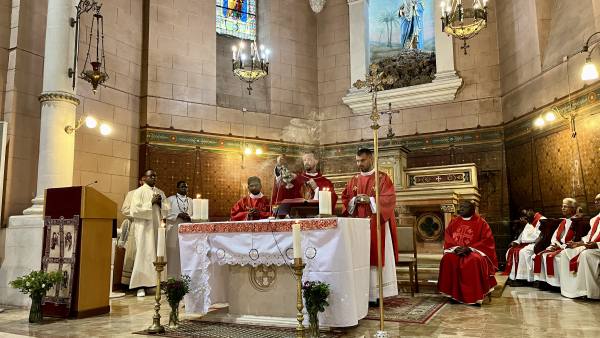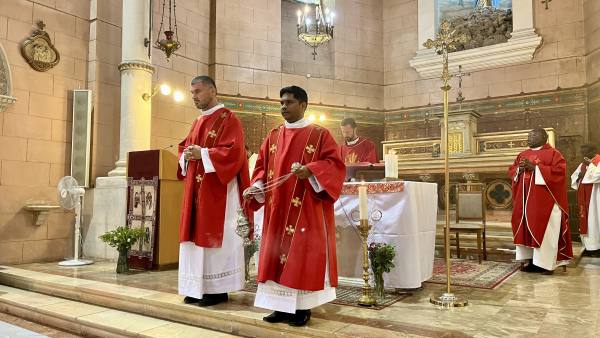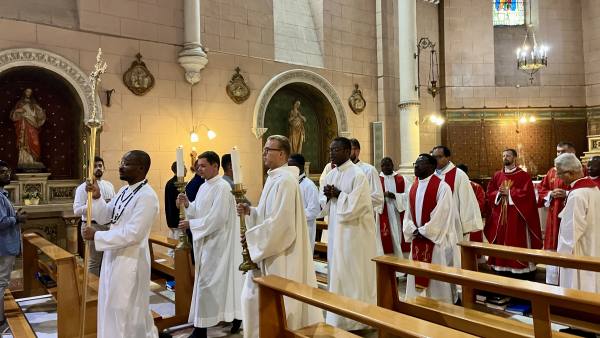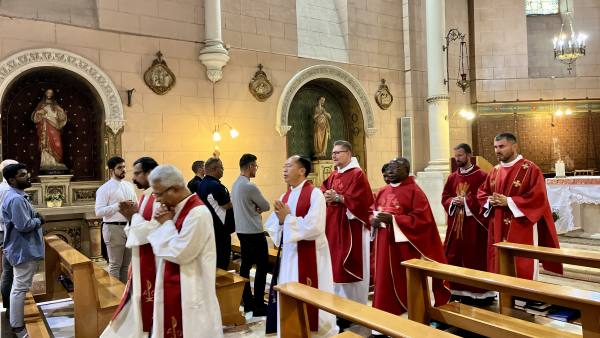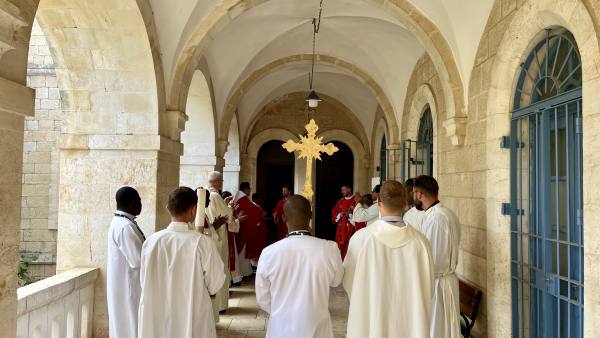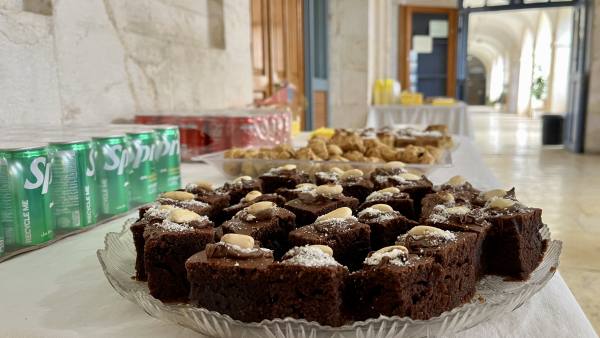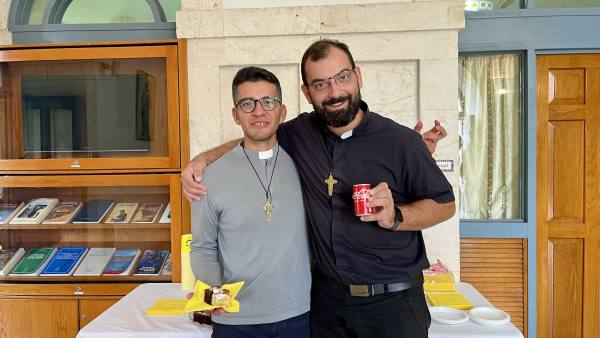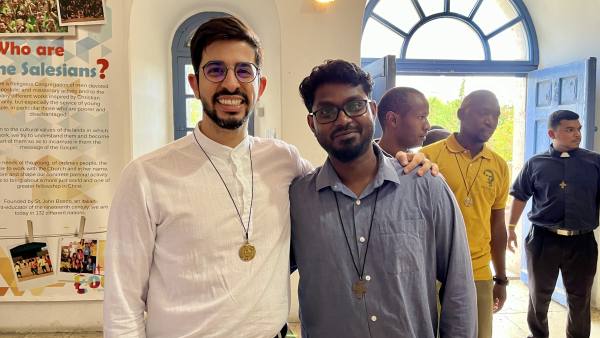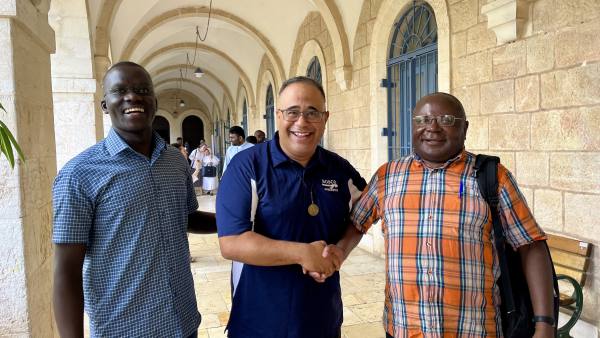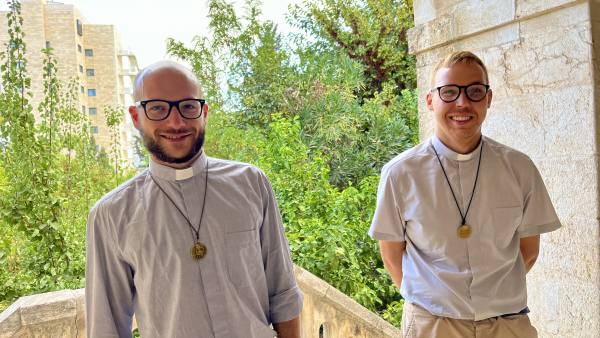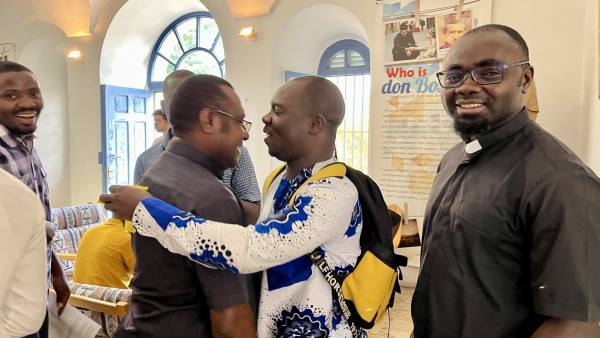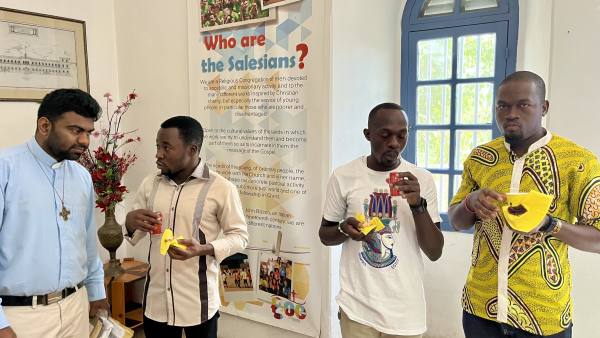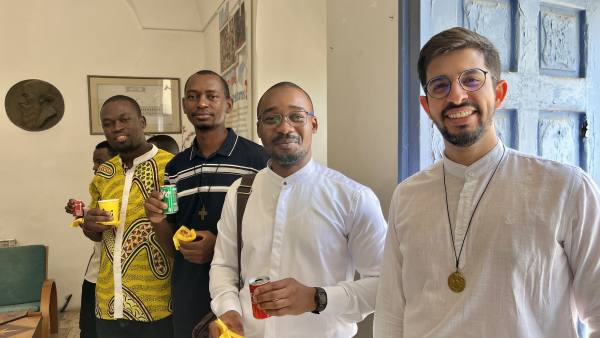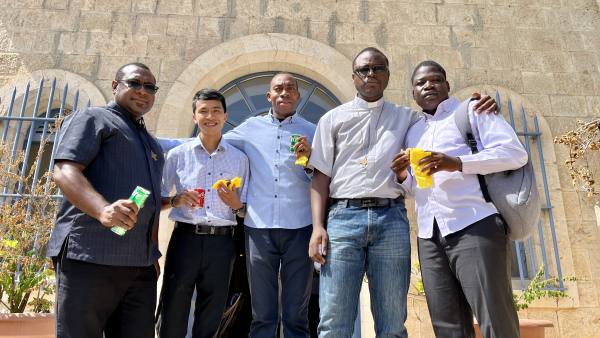The new academic year at the Studium Theologicum Salesianum (STS), the Salesian Pontifical University, Faculty of Theology, Jerusalem Campus, was solemnly inaugurated on Monday, September 16th, with the celebration of the Opening Mass in the monastery chapel. This significant event gathered students, faculty, staff, and friends of the Salesian community to seek God’s blessings for the upcoming academic journey.
The Eucharistic celebration was presided over by Mons. Natale Albino, who led the assembly in prayer, invoking divine grace and guidance for the year ahead. In his homily, Mons. Albino emphasized the importance of cultivating both intellectual and spiritual growth during the academic process. He encouraged the community to approach their studies not only as a pursuit of theological knowledge but also as a deepening of their relationship with Christ and their commitment to service.
The Opening Mass is a cherished tradition at STS, marking not only the formal beginning of the academic year but also a moment of spiritual renewal for all involved. As the new academic year begins, the STS community looks forward to a year filled with the pursuit of knowledge, personal growth, and the deepening of faith, all guided by the Salesian spirit of love, service, and dedication to the Gospel.
We invite you to stay connected with our community by following us on Facebook and our new Instagram account! Keep up to date with the latest news, events, and spiritual reflections from the Studium Theologicum Salesianum, and join us in celebrating the journey of faith and learning.
Follow us now and be part of our growing online community!
Homily by Mons. Natale Albino
« Say the word » (Lk 7,7), says the centurion to Jesus. And from the Word just proclaimed wereceive today four rays that illuminate the dawn of the formative and academic year 2024-2025 that we begin here in Ratisbonne.
Faith – The Spiritual Dimension
The centurion seems like a perfect Salesian seminarian. Jesus admires him and even affirms that in no other person he has found so much faith. Why? The centurion believes that his Word can give life. He says what, in every Holy Mass, adapted to us, are the last words that we repeat before receiving the Holy Eucharist. He seems to believe in the Word and live in a Eucharistic way.
Word of God and Eucharist. This year some of you will become lectors and acolytes; others, deacons and priests. In the lectorate and in the diaconate, you will solemnly receive the Word: «Receive the Gospel of Christ whose herald you have become». In the acolytate and in the priesthood, you will receive the sign of bread and wine: « Accept from the holy people of God the gifts to be offered to him ».
Before those moments, every day we are given the Word, to be meditated on in the Liturgy ofthe Hours and in Lectio Divina, and the Most Holy Eucharist, to be celebrated with faith in the Holy Mass and adored in the Eucharistic adoration. Above all in the Holy Mass, the Word and the Eucharist put us in communion with the whole Church, composed of the saints in Heaven, the dead people and us, as Saint Paul reminds us in the beautiful Eucharistic tale of 1 Cor 11,24-25:« This ismy body that is for you (…) This cup is the new covenant in my blood ».
Here is the faith of the centurion and here is the spiritual life, a life in the Holy Spirit that we solemnly invoke today and nourished by the Word, by the Eucharist, especially in the Holy Mass.
Humanity – The Human Dimension
The local Jews, who normally shy away from pagans, come to Jesus to speak well of the centurion. Although he is a pagan, he has built a synagogue and, although he is a foreigner, he lovesthe people among whom he finds himself. He cares about a person who is of a lower rank than him. We are before a truly nice person, who does not need to impose his will on others to be someone. Indeed, he seems to interpret his role as a service and to live relationships with serenity, both with those who are superior in the hierarchy (I too am a person subject to authority), both with those who are inferior (with soldiers subject to me). How different, however, are the Christians of Corinth, whom St. Paul harshly rebukes. They are divided, they do not wait each other for dinner, each one selfishly brings his own food to eat, they humiliate those who have nothing to eat.
«Gratia non tollit naturam, sed perficit». Divine grace presupposes human nature. It’s fundamental to grow in a balanced way, helped by the educators, the spiritual fathers, the other seminarians, as well as by all the sports and games that are your trademark. St. John Bosco used to say to his novices: «What I see as necessary is that you grow and become strong young men by keeping healthy and that you later be able to do a lot of work».
Here is the humanity of the centurion and here is the human dimension, the second ray under which we want to place ourselves.
Intelligence – Intellectual Dimension
Through his friends, the centurion proposes to Jesus a reasoning about superiors andsubordinates. His trust in Jesus is not blind, but well reasoned. In this too he would be an exemplary Salesian, because the many years of study that the formation proposes aim precisely to develop a well-thought- out faith in our mind.
Today we inaugurate the academic year of the Studium Theologicum Salesianum, which represents a true jewel in the crown for Salesians throughout the world. Soon the teachers will renewtheir profession of faith, as required by Can. 833 of the Code of Canon Law. Behind the oath of the professors, we seem to hear the echoes of the words of Saint Paul: « I received from the Lord what I also handed on to you » (1Cor 11, 23).
The various theological disciplines are inserted with the same humility of the centurion into theriver of the Tradition of the Church, which together with the Sacred Scripture is part of the unique deposit of faith. The Gospel according myself is useless. All of you know that the true theology isoriented to develop a humble and reasoned amen to the one Word that saves. Dear seminarians, this is the golden age of your life. This is the time to read manuals, to study the Catechism of the Catholic Church in depth, to learn foreign languages, etc. It is a time that will not return. History isalready full of Christopher Columbus theologians, who thought they had discovered the Indies of thetruth. People expect you to be prepared priests, who know how to give clear answers and to speak on behalf of the Church. Here is the intelligence of the centurion and here is the third formative dimension, the intellectual one.
Love – Pastoral And Community Dimension
The centurion, in addition to respecting Jesus, loves the people among whom he lives. No superior told him to build a synagogue, but he took the initiative and did it. Above all, despite the great hierarchical difference, he takes care of his sick servant and intercedes for him. It is a sincere love, which reflects the way in which God loves, but which Saint Paul does not see circulating among the Christians of Corinth.
As Salesian seminarians, one day you will leave here to be witnesses of this divine love for all. It is beautiful to dream now of summer camps, schools, the oratory. There is so much to do! Inyour eyes we already see the reflections of the thousands and thousands of young people that you will animate to the faith, according to your Salesianity. Well, that pastoral life begins today. Someonewill say: but where can we live the pastoral, if we are in the seminary and if there are no oratories here? Where should we start? The answer is simple: from your friend in the seminary.
Here you are next to people you have not chosen, with whom you can interact side by side, even if it is often not easy, like the centurion, who is subordinate to others. The pastoral life of the future will be the same: you will not choose the people you are with and the people to whom youwill be sent. In the Church we are all subordinate to someone else and no priest does in life what he had dreamed in the seminary. Therefore, either we educate ourselves now in the spirit of communionand obedience in the Church or we will spend our lives unhappy.
Saint Paul encourages us today: «Wait for one another » (1Cor 11,33). Waiting patiently for the times of growth of others is one of the secrets to build the Church. The oratories you will set in your future ministry start today, by living a wonderful seminary. Furthermore, since God is infinitely more powerful than us, the first and main way to take care of others is the prayer of intercession. Even the centurion prayed to Jesus, interceding for his servant. Intercede for others: for those around us and for those we will meet throughout our lives.
Here is the ray of love, of the pastoral and community dimension that you enthusiastically take up again today.
Dear formators, teachers and seminarians: faith, humanity, intelligence and love of the centurion correspond to the four fundamental dimensions that the Ratio Formationis of the Salesians of Don Bosco provides: spiritual, human, intellectual, pastoral. I wish you to embody them in this formative and academic year, with the smile and kindness for which you Salesians are recognized throughout the world, with the help of the Virgin Mary and your special Founder.
